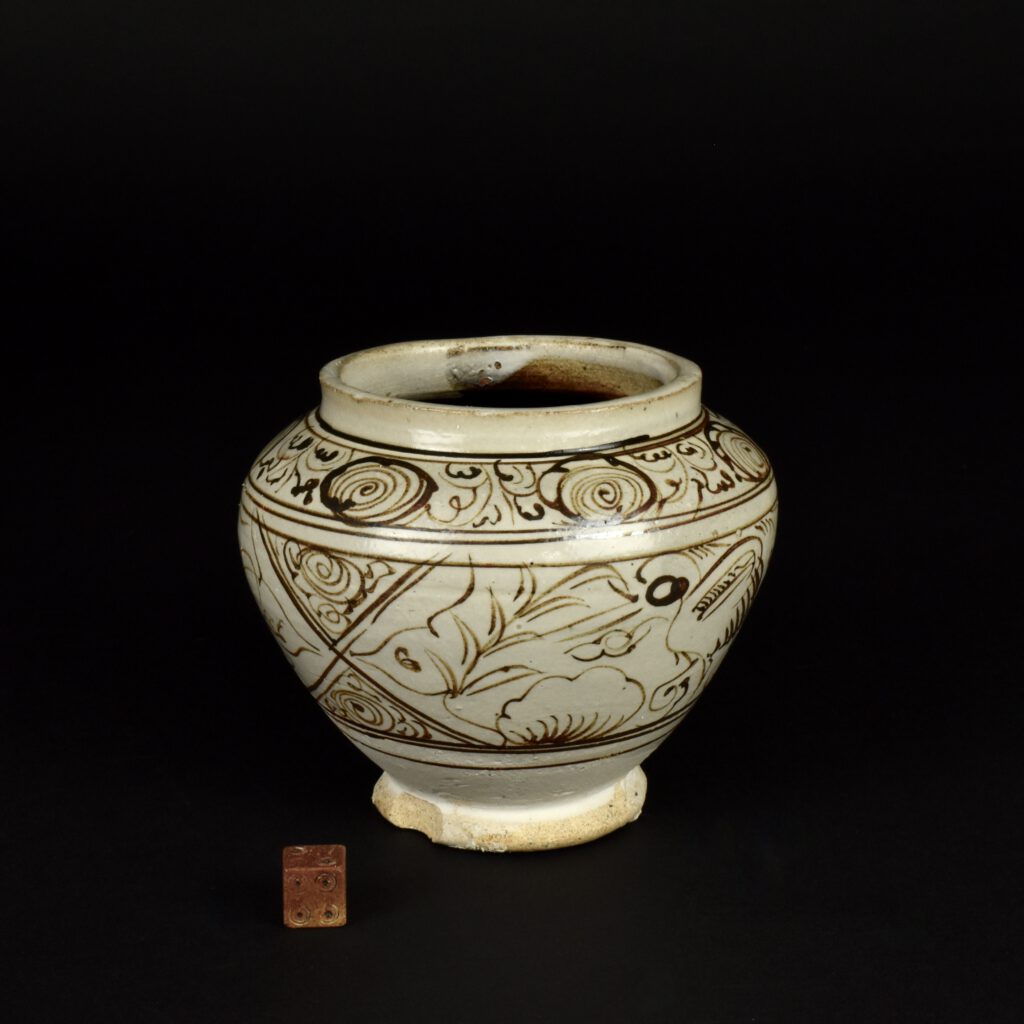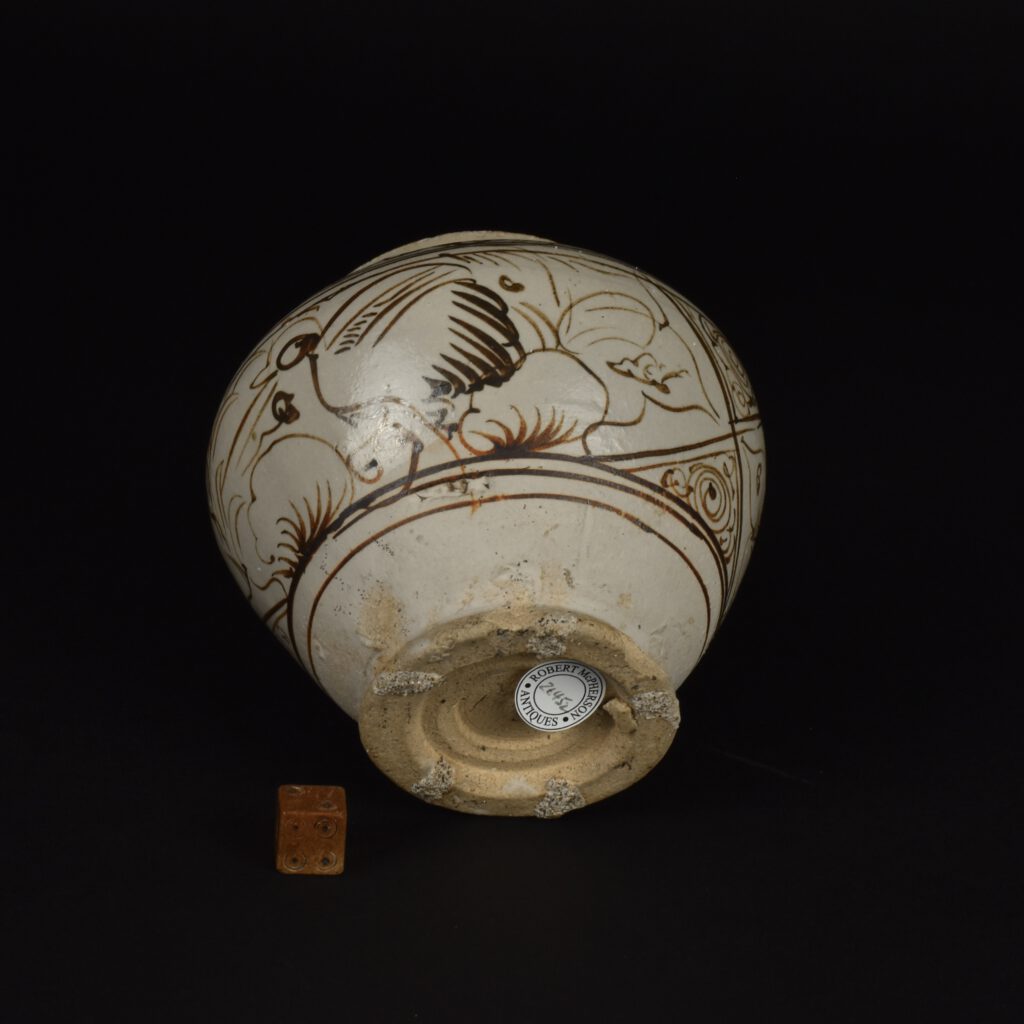
Ming Cizhou Type Stoneware Jar
A Small Ming Cizhou Type Painted Jar, Mid-16th Century. This small guan type stoneware jar is painted in iron-oxide on a cream slipped ground, the thin glaze stops above and below the last iron-brown line, above the splayed foot. The interior is glazed in brown iron-oxide. Using quickly applied marks the painter has created a lively design, comprising of two joined panels, each showing a crane among plants. Post-Yuan Cizhou ware is often rather difficult to date, and pieces like the present example are often dated earlier than they should be. This jar with its distinctive painting style closely relates to a larger, more sophisticated jar, dated 1541 (Ming, Jiajing Period) in the Herbert F. Johnson Museum of Art, Cornell University. This dated jar is illustrated in Freedom of Clay and Brush through Seven Centuries in Northern China (see references). The name Cizhou originated from the ancient area of Cizhou, encompassing a broad arc across China, which was first recorded during the Sui dynasty (581-618). However, the location constantly shifted and though the area of Cizhou is mentioned in the Tang dynasty (618-906) and Five Dynasties (906-960), each referred to an altered location. During the Song, Jin (1125-1234), Yuan (1279-1368), and partly into the Ming dynasties (1368-1644) the kiln areas of Cizhou were primarily concentrated in the northern provinces of Hebei, Henan, and Shaanxi.
SOLD
- Condition
- There are two large chips to the flared base. Despite the top rim being glazed this Ming jar would have had a cover.
- Size
- Height 9.7 cm (3 3/4 inches)
- Provenance
- From a Japanese collection.
- Stock number
- 26452
- References
- Freedom of Clay and Brush through Seven Centuries in Northern China ; Tz'u-chou Type Wares 960-1600 ( Yutaka Mino, Indiana University Press. ISBN 0-253-25575-6)












